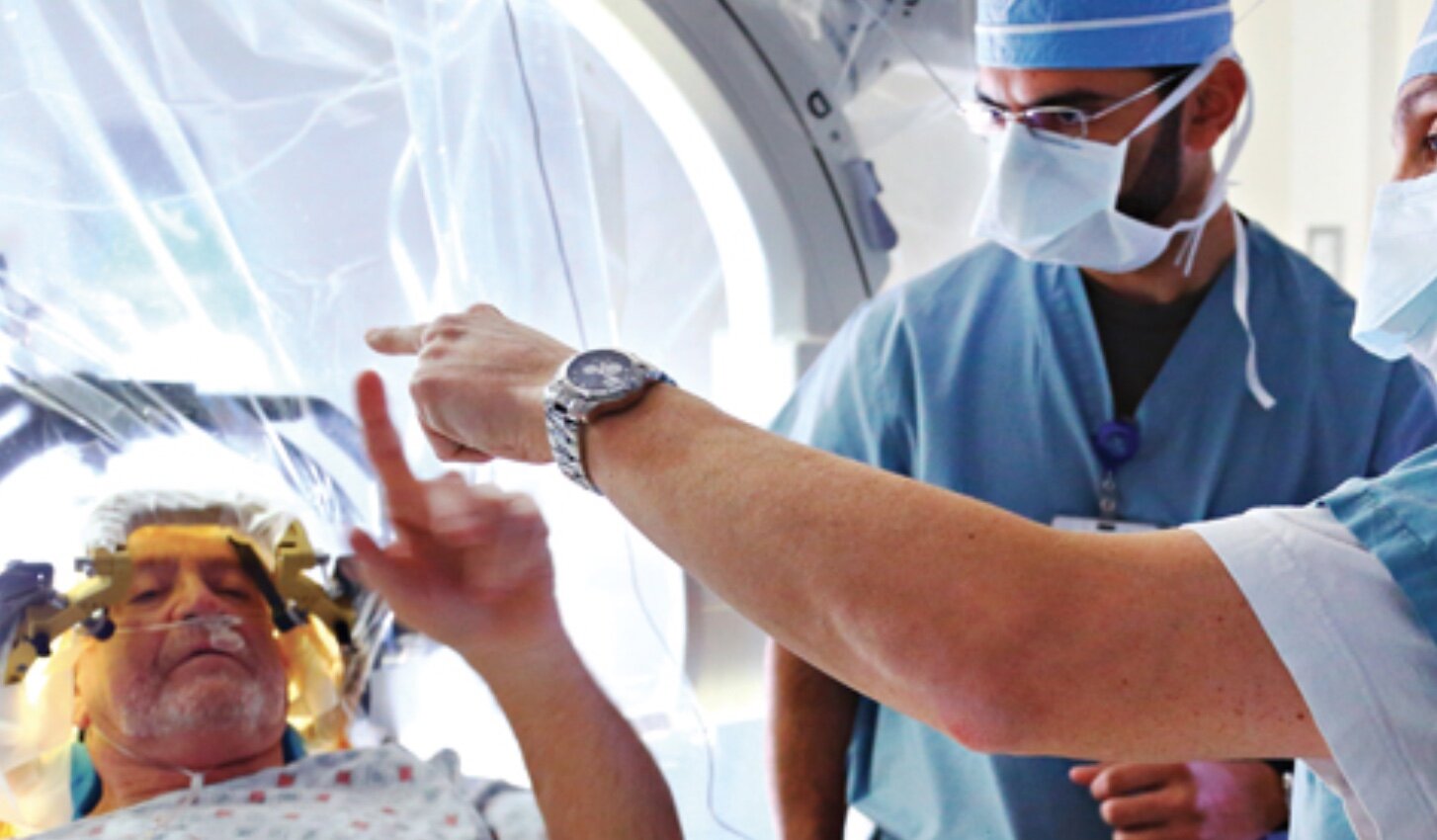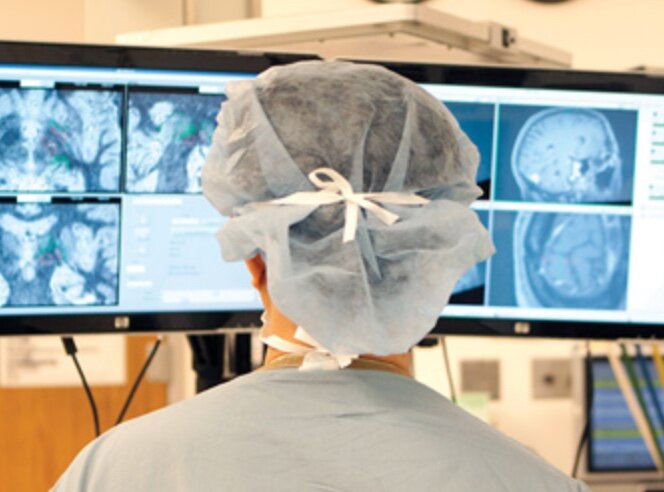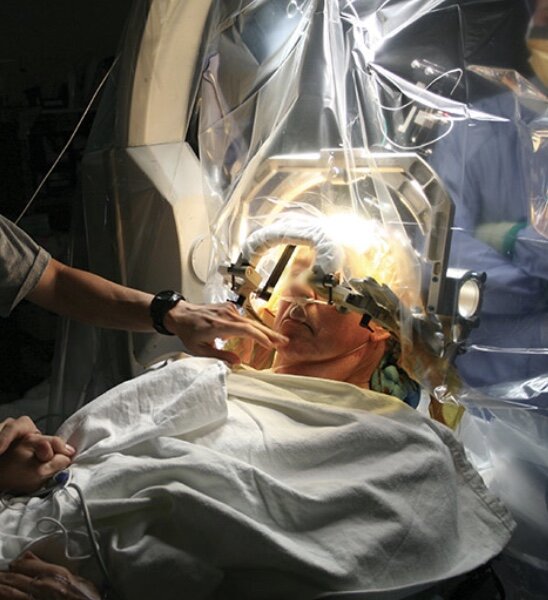Deep brain stimulation surgery? Now what?
One of the most common questions we are asked is what is deep brain stimulation. For those with deep brain stimulation many are asking what is next? We had the pleasure of sitting down with Josh Wong MD to pick his brain on these important topics.
Who is Josh Wong MD?
Joshua Wong grew up in California and worked as a computer software engineer while obtaining his bioengineering degree from UC San Diego. He then moved on to attend medical school at New York Medical College and completed his Neurology residency at the University of Florida. He is pursuing an academic fellowship in movement disorders at the University of Floridaand is entering a 3rd year on a special NIH grant called a R25. His research interests include deep brain stimulation, neuromodulation, advanced neuroimaging, and computational bioinformatics. His work has been well published and he was even interviewed for Buzz Feed!
1. What is deep brain stimulation (DBS)?
Deep brain stimulation is an advanced surgical therapy for a variety of conditions such as Parkinson's disease, essential tremor, and dystonia. It is a procedure in which a metal wire, called a “lead”, is implanted into the "deep" part of the brain and is later connected to a battery. The battery is placed in the upper chest area similar to where a pacemaker is placed. The DBS system will then send electricity to the brain to treat many of the common symptoms of Parkinson’s disease such as tremor, stiffness and slowness.
2. What is the DBS surgery like?
The exact steps involved in the DBS procedure may differ for each medical center, but in general each patient should be evaluated by a multidisciplinary committee before deciding on DBS surgery. This involves a comprehensive evaluation from multiple specialists such as a neurosurgeon, psychiatrist, neuropsychologist, and rehabilitation specialists such as physical and occupational therapist. Additionally, as a person with PD, one should have an extensive discussion with their neurologist and make sure all questions are answered before deciding to have DBS surgery. Having good support with friends or family is essential for success with this type of surgery and involving them in the decision and information gathering before the surgery is helpful.
There are two main ways to have DBS surgery. The traditional method involves being awake during the surgery so that a specialized team can do real-time brain mapping to find the optimal position to place the DBS lead in the operating room. During surgery, you can hear the sounds of your brain waves during the mapping process.
The other option is to be completely asleep for the entire duration of the surgery. The surgery team will use general anesthesia to put you to sleep. Instead of brain mapping, the neurosurgeon will use CT or MRI guidance to precisely implant the DBS lead. In this type of DBS surgery, you will be inside a brain imaging suite the entire time.
For both types of DBS surgery, the entire procedure takes roughly 3-4 hours. After surgery, you will likely spend one night in the hospital and be allowed to go home the next day depending on the institution.
3. What symptoms can DBS treat?
For Parkinson’s disease, DBS can help with tremor, stiffness, slowness and dystonia (muscle cramping/pulling). It can also reduce levodopa related dyskinesias (involuntary movements) and motor fluctuations (when the medications stop working too soon or you start to have an inconsistent response). DBS can also help reduce the amount of medication required on a daily basis.
DBS cannot in general help with walking or balance, freezing of gait, speech or memory. The comprehensive evaluation prior to getting DBS is important to review these issues and make sure the person with PD is aware of the limitations of DBS therapy and has reasonable expectations of the outcome of surgery. In a small minority of people, some of these issues can become worse after DBS. Communication is key so that you understand the risks and benefits of surgery before you have it.
4. I got DBS surgery, now what?
Typically after DBS surgery, you will follow up with the DBS clinic for programming. This process can take up to 6 months and require weekly to monthly visits. During this time, you will try out various programming settings to find the best one that treats your symptoms. As you find the optimal programming settings, your neurologist may also be able to decrease the amount of medications you take every day. Once the optimal setting is found, you should check in with your DBS team every 6 to 12 months to see if any additional fine tuning is needed and to keep an eye on your battery levels. The DBS battery typically requires replacement every 3-5 years. DBS battery replacement requires minor outpatient surgery and you are often able to go home the same day. There are now rechargeable batteries although for various reasons many people may opt not to have to recharge every few days and get a traditional old fashioned battery that last 4-5 years. It is important that you understand what is required of you or your family member if you opt for a rechargeable battery since it does require a time commitment and good compliance.
5. What’s in the future for DBS?
There are many exciting new features coming soon for DBS. One of them is a “smart DBS” called closed-loop DBS. In this mode, the DBS will analyze your brain waves in real time and only stimulate the brain when needed. This provides precision therapy as well as saves battery life on the device. Another feature is called brain sensing. This tool uses advanced brain wave recording and analysis to guide DBS programmers to find the “sweet spot” more quickly and efficiently. With this feature, we can maximize our ability to provide best symptom improvement while minimizing the risk of DBS related side effects. For a list of all the clinical trials ongoing in the United States, please visit https://clinicaltrials.gov.
To read more books and articles by Michael S. Okun MD check on Twitter @MichaelOkun and these websites with blogs and information on his books and http://parkinsonsecrets.com/ #Livingwith Parkinson’s #EndingPD #Parkinsonsecrets #LessonsFromTheBedside
He also serves as the Medical Advisor for the Parkinson’s Foundation.
To see more on Dr. Indu Subramanian she does live interviews of experts in Parkinson’s for the PMD Alliance.









